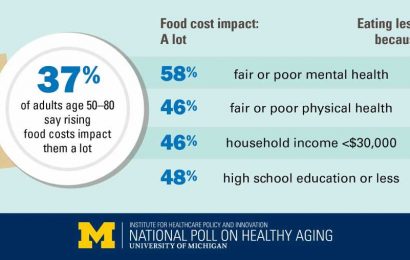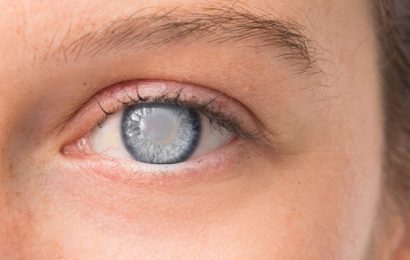The efficacy, durability, and safety of faricimab (Vabysmo, Genentech/Roche) for diabetic macular edema (DME) seen at 1 year extends to 2 years, according to results of two pivotal trials.
As previously reported, in January 2022, the US Food and Drug Administration (FDA) approved faricimab for DME and for age-related macular degeneration based on 1-year outcomes from the phase 3 YOSEMITE and RHINE trials.
The trials compared two dosing regimens of faricimab — including a personalized treatment interval (PTI) regimen that extended dosing intervals up to 4 months — versus aflibercept (Eylea, Regeneron Pharmaceuticals), Charles J. Danzig, MD, said during a presentation at the American Diabetes Association (ADA) 82nd Scientific Sessions in New Orleans.
These latest results show that “the safety, durability, and efficacy seen at the primary endpoint (1 year) [with faricimab for DME] is maintained” at 2 years, Danzig told Medscape Medical News in an email.
“Patients are able to achieve similar visual gains [as with aflibercept] with fewer injections,” Danzig, from Rand Eye Institute, Deerfield Beach, Florida, explained.
The ongoing RHONE-X extension study of combined data from YOSEMITE and RHINE will provide 4-year results, he noted, expected by August 2023.
“We now have a ‘more durable’ therapy with faricimab that has robust fluid resolution and a great safety profile,” commented Arup Das, MD, PhD, chair of the ADA session during which the findings were presented. “Thus, extended dosing is possible with less frequent injections.”
“The treatment burden for the current anti-vascular endothelial growth factor (anti-VEGF) therapy is now reduced significantly,” he told Medscape Medical News.
Das, from the University of New Mexico School of Medicine, Albuquerque, led early work on angiopoietin-2 (Ang-2) in retinal angiogenesis and diabetic retinopathy in animal models 15 years ago, which was instrumental in the development of faricimab. He was a principal investigator for the 1-year YOSEMITE trial and is a principal investigator for the RHONE-X trial, but he was not involved in the analysis of 2-year data from YOSEMITE and RHINE.
As previously reported, faricimab and aflibercept, as well as brolucizumab (Beovu, Novartis), ranibizumab (Lucentis, Genentech), and bevacizumab (Avastin, Genentech), all block the actions of VEGF that causes excess blood vessels to form, and faricimab also blocks Ang-2 that makes blood vessels weaker.
On June 8, the FDA approved brolucizumab for DME but reiterated a previous warning about retinal vasculitis and retinal vascular occlusion. In clinical trials, patients needed fewer intravitreal injections to achieve visual acuity results comparable to those of aflibercept.
“Even though you are adding another target [Ang-2], you are not getting increased visual gain; it is a noninferior treatment, but the benefit was that you could increase the durability of the treatment, going to every 4 months,” Das commented at the meeting.
Das asked Danzig if he would use faricimab as a first-line treatment or for nonresponders to anti-VEGF treatment.
Danzig replied that “it’s going to be a little bit of both.” He noted many patients with diabetes have commercial insurance that is “hesitant to approve some of the brand name drugs first-line.”
However, patients with diabetes have many doctor appointments, so “if we can put two fewer needles in an eye in a year that’s a lot for that patient,” he stressed.
An ophthalmologist asked Danzig if he was going to directly go to the PTI dosing approach.
“The label is Q4 to Q16 weeks,” he replied. “If you wanted to follow the trial design, you could do monthly for six injections and then every 8 weeks for the next [ones], but the label gives you flexibility.”
Another ophthalmologist noted that aflibercept was given every 8 weeks after the initial doses, but in a retinal clinic, patients are also treated every 4 weeks, so they may have been undertreated. He also asked if there are data showing faricimab might benefit nonresponders.
Danzig replied that the dosing interval for aflibercept was based on the label. He noted that “22% of the patients in the clinical trial were switch patients. But we don’t have that subanalysis data yet. Anecdotally, in some of my patients in the clinic, I’ve definitely seen an improvement.”
Key 2-Year Findings
YOSEMITE and RHINE enrolled 1891 patients with DME with macular thickness ≥ 325 µm and best corrected visual acuity (BCVA) of 25-73 ETDRS letters. The primary endpoint was at 1 year but treatment continued to 96 weeks, with the final study visit at 100 weeks.
Patients were randomized to one of three groups:
-
Faricimab every 8 weeks: 6 mg every 4 weeks up to week 20, then 6 mg every 8 weeks until week 96.
-
Faricimab PTI: 6 mg every 4 weeks until week 12, then, based on macular thickness and BCVA change at a visit, the faricimab dose at subsequent visits could be every month to every 4 months, until week 96.
-
Aflibercept: 2 mg every 4 weeks up to week 16, followed by 2 mg every 8 weeks until week 96.
The median number of injections during weeks 60-96 were three injections in the faricimab PTI group versus five injections in the other two groups.
A total of 78% of patients who achieved dosing every 3 months at week 52 did not reduce this dosing interval through week 96, and 62% of patients who achieved dosing every 4 months at week 52 did not reduce this dosing interval through week 96.
Vision gains with either faricimab dosing regimen were noninferior to aflibercept at 1 year, which was maintained through year 2.
There were greater reductions in macular thickness with faricimab with either dosing regimen compared to aflibercept through year 2.
More patients achieved absence of DME and absence of intraretinal fluid with either faricimab dosing regimen compared with aflibercept through year 2.
Faricimab was well-tolerated through study end. No cases of vasculitis or occlusive retinal vasculitis were reported.
“Brolucizumab has the side effect of occlusive retinal vasculitis in a minority of patients (2.1%) and intraocular inflammation (3.3%), as shown in a recent ad hoc analysis of the HAWK/HARRIER study in wet ARMD patients, that is not seen in the faricimab-treated patients,” Das noted.
“Thus, brolucizumab still has a safety concern for retina physicians,” he continued, adding: “If I have to switch to an alternative anti-VEGF drug in DME patients, I would like to use a drug that is safer and does not have this potential side effect issue.”
The study was funded by Genentech/Roche. Danzig has reported being on an advisory panel for Genentech and being a consultant for Adverum Biotechnologies, Genentech, Novartis, and Regeneron. He also reports research support from Adverum Biotechnologies, Genentech, Kodiak, Novartis, Regeneron, and Roche, and being on a speaker’s bureau for Novartis. Das has reported receiving grants from Genentech/Roche for being a principal investigator in clinical trials and from Novo Nordisk for being a PI for the FOCUS clinical trial, and receiving a National Institutes of Health grant and a VA Merit Review grant.
ADA 2022 Scientific Sessions. Abstract 47-OR. Presented on June 3, 2022.
For more diabetes and endocrinology news, follow us on Twitter and Facebook.
Source: Read Full Article


